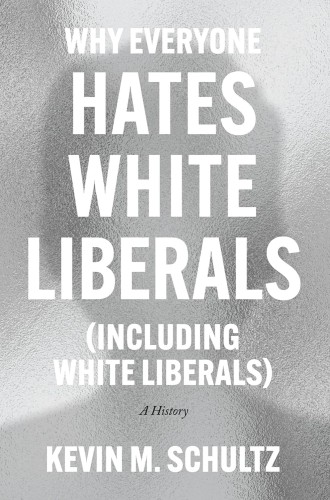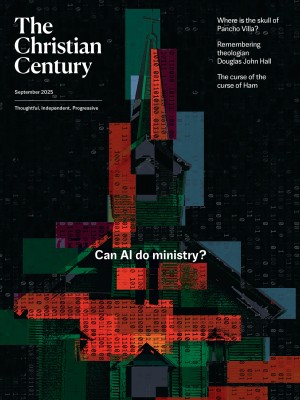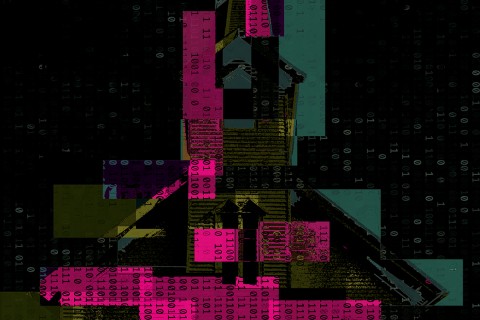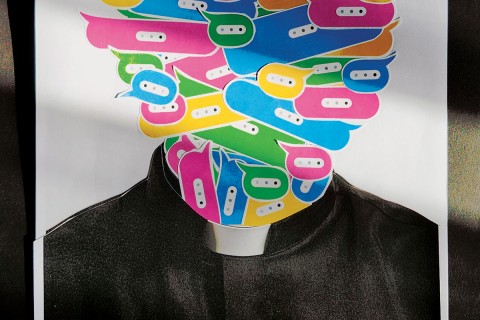A brief history of hating liberalism
Kevin Schultz explains why White liberals are under fire—from all sides and from within.

Why Everyone Hates White Liberals (Including White Liberals)
A History
The great spiritual luminary Thomas Merton once alluded to the image of a person who spent a lifetime climbing the ladder of success only to discover, at the top, that the ladder was leaning on the wrong wall. It is an apt metaphor for the experience of those of us who are generally categorized as “White liberals” and who have built our life’s work on an array of moral and political assumptions that are being systematically disassembled before our eyes. There is an alarming and disorienting sense that the ladder on which we stand is leaning against thin air.
In his new book, University of Illinois historian Kevin Schultz takes on the task of understanding the reasons for this disorientation and offers some perspective on the deterioration of liberal idealism in our political culture.
By the author’s own description, this is a history book, not a polemic or a political manifesto. It is a concise overview of the many and various understandings of the term liberal. In a tone that is persuasive without being combative and a style that is conversational rather than pedantic, Schultz nimbly traces the evolution of the concept of liberalism from its 18th-century application as a spirit of rebellion against European monarchy, through the 19th-century construct of a laissez-faire capitalism that maximizes economic freedom, to the early 20th-century progressivism that, ironically, rebelled against the tyranny of laissez-faire capitalism, to Franklin Delano Roosevelt’s codification of liberalism as the distinctively American, democratic, “middle way” between communism on the left and fascism on the right.
Read our latest issue or browse back issues.
The central, compelling insight of this book is that the establishment of FDR’s liberalism as the normative political philosophy of Western democracy (which happened from 1930 to 1965) also represents the transformation of liberalism from the David doing battle with each era’s prevailing Goliath into a new Goliath—a giant that gets lampooned and harpooned by just about everyone: from the right, from the left, from above, from below, from without, and even from within.
Schultz proceeds to describe the widely divergent movements since 1950 that have almost nothing in common with each other except for the common enemy of established liberalism. In the 1950s and 1960s, William F. Buckley Jr., Whittaker Chambers, John Dos Passos, and Joseph McCarthy all came after liberals from the right because they were collectivists and socialists on the slippery slope to communism. Saul Alinsky and Norman Mailer attacked from the left because liberals were too individualistic and conventionally capitalist. James Baldwin, Bayard Rustin, and Malcolm X despised liberalism’s defense of incremental change and appeasement of the racial status quo, while Tom Wolfe transformed the Upper East Side, radical chic, limousine liberalism of the 1970s into the ultimate elitist hypocrisy. Milton Friedman and the economic neoliberals lambasted liberalism’s resistance to a deregulated market. This has all culminated, of course, in the media roastings by Rush Limbaugh, Joe Rogan, Ann Coulter, Laura Ingraham, and Tucker Carlson, which are characterized less by a distinctive policy objective or coherent social vision than by the shared battle cry to “own the libs.”
Why Everyone Hates White Liberals (Including White Liberals) is a relatively brief treatment of the subject. It offers more of a bird’s-eye view survey than an in-depth study of specific perspectives, political philosophies, or public policy positions. The book, however, is well researched, skillfully argued, and engagingly accessible to just about anyone who wants to make sense of our present political context.
Like many analytical histories, Schultz’s book is more useful in describing what has happened than for its solutions or predictions as to what happens next. But it is significant that Schultz leads us to the inescapable conclusion that the word liberal is irretrievably damaged as an aspirational ideal or even as a meaningful designation for what White liberals want it to mean. Although he suggests the possibility that “social democrat” might come close to communicating what a liberal once was, we are still looking for the nomenclature to replace FDR’s long-outdated forecast that the contrast between conservatives and liberals would define the American political landscape for all time.
Even though this is a book of political history, readers who lead in the disciplines of religion and spirituality may find an implicit parallel between the political fate of establishment liberalism and the trends long in place for liberal White Christian denominations. Mainline Protestant readers may even feel less alone in the struggle to define ourselves by (and perhaps defend ourselves from) all of the lampoons and harpoons, the aspirations and pejorative labels, against which just about everyone is leaning their ladder.






